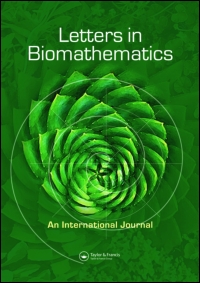Cross-diffusion induced Turing and non-Turing patterns in Rosenzweig–MacArthur model
DOI:
https://doi.org/10.30707/LiB6.1MukherjeeKeywords:
Cross-diffusion, Turing instability, Travelling wave, Stationary pattern, Spatio-temporal chaos, BifurcationAbstract
Pattern formation is widely studied in spatio-temporal prey– predator models with only self-diffusion terms. Models with cross-diffusion, besides self-diffusion, take care of the situation in which presence, absence, abundance or scarcity of one species affect the movement of a population of another species in a given domain. Here, we consider cross-diffusion induced pattern formation in a prey–predator model with Rosenzweig–MacArthur type reaction kinetics in a one-dimensional spatial domain. Spatio-temporal prey–predator model with Rosenzweig–MacArthur type reaction kinetics and self-diffusion is unable to generate Turing patterns, rather it produces travelling wave, periodic travelling wave, modulated periodic travelling wave and spatio-temporal chaotic patterns. However, addition of density dependent cross-diffusion leads to satisfaction of Turing instability conditions and generation of stationary Turing patterns. Also, the dynamics of the patterns formed in the self-diffusion model are preserved. Furthermore, cross-diffusion affects the speed of travelling waves produced in the self-diffusion model. Our focus in this work is to investigate the bifurcation of travelling wave solution into Turing patterns and transition of one pattern into another in the presence of cross-diffusion.
